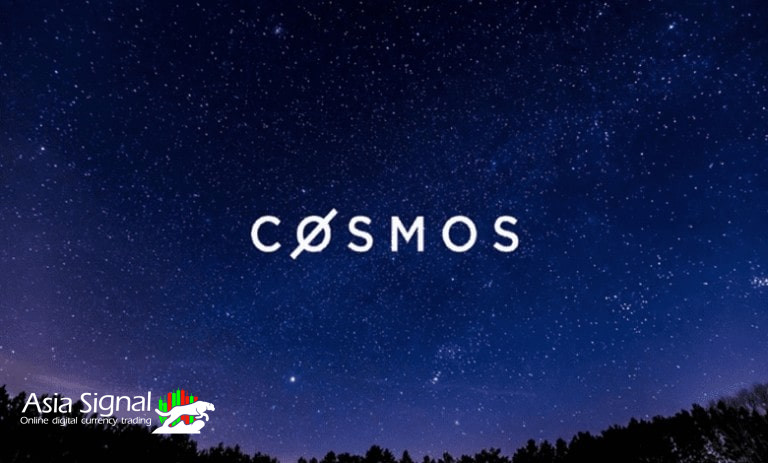Cryptocurrency, with Bitcoin leading the way, has revolutionized the global financial landscape by introducing decentralized and secure digital assets. However, with the growth of the cryptocurrency ecosystem, scalability, interoperability, and security issues have emerged, impeding its full potential. The Cosmos Network seeks to address these challenges by offering a unique solution that interconnects various blockchains, forming an interconnected "Internet of Blockchains." In this article, we will delve into the cosmos of cryptocurrency and explore the intricacies of the Cosmos Network.

1. Understanding the Cosmos Network
The Cosmos Network, commonly referred to as Cosmos or simply ATOM, is an open-source platform that aims to facilitate the exchange of digital assets and data across multiple blockchains in a scalable and secure manner. It was developed by Tendermint Inc., a blockchain infrastructure company, and was officially launched in March 2019.
2. The Problem of Blockchain Interoperability
One of the primary challenges faced by the cryptocurrency space is the lack of interoperability between different blockchain networks. Each blockchain operates independently, making it challenging for them to communicate and transfer value seamlessly. Cosmos seeks to solve this problem by enabling interoperability through its innovative technology.
3. The Inter-Blockchain Communication (IBC) Protocol
At the heart of the Cosmos Network lies the Inter-Blockchain Communication (IBC) protocol, a groundbreaking system that allows different blockchains to connect and interact with one another. IBC acts as a standardized communication protocol, enabling secure token transfers and data exchange between chains while maintaining their autonomy.
4. The Cosmos Hub
The Cosmos Hub serves as the central hub or "Internet of Blockchains" for the Cosmos ecosystem. It operates as a separate blockchain, connecting various independent blockchains through IBC. The Cosmos Hub utilizes the ATOM token, which serves multiple purposes, including staking, governance, and transaction fees.
5. Tendermint Consensus Algorithm
Cosmos employs the Tendermint consensus algorithm, a Byzantine Fault Tolerant (BFT) consensus mechanism that ensures secure and rapid block creation. Tendermint consensus facilitates faster transaction finality and reduces the chances of network forks, enhancing the overall network security.
6. Zones and Sovereign Blockchains
The Cosmos Network consists of "zones," which are sovereign blockchains that can operate independently and possess their consensus mechanisms. These zones are interconnected through the Cosmos Hub using the IBC protocol. The autonomous nature of zones allows for greater flexibility and innovation in the development of new blockchains.
7. Cosmos SDK: Empowering Developers
Developers play a crucial role in the Cosmos ecosystem, and to facilitate their participation, the platform offers the Cosmos SDK (Software Development Kit). The Cosmos SDK is a modular framework that simplifies blockchain development, enabling developers to create custom blockchains with specific features and functionalities.
8. Staking and Governance in Cosmos
The native ATOM token serves as the fuel of the Cosmos Network. Holders can stake their ATOM tokens to participate in block validation and consensus, contributing to the security and stability of the network. Additionally, ATOM holders can participate in on-chain governance, where they propose and vote on protocol upgrades and improvements.
9. Use Cases and Projects in Cosmos
The Cosmos Network's interoperability and flexibility have attracted numerous projects and applications seeking to leverage its capabilities. Some prominent projects include:
- Binance Smart Chain (BSC): A parallel blockchain that operates alongside Binance Chain, providing fast and cheap transactions for decentralized applications (dApps).
- Terra: A stablecoin platform that connects to the Cosmos Hub, offering programmable money and enabling stable-value transactions.
- Kava: A DeFi (Decentralized Finance) platform built on Cosmos, providing lending and borrowing services with various digital assets.
- Akash Network: A decentralized cloud computing platform that utilizes the Cosmos Network's capabilities to offer affordable and efficient cloud solutions.
10. Challenges and Future Prospects
While Cosmos has made significant strides in blockchain interoperability, it faces some challenges. Ensuring the security and efficiency of the IBC protocol is crucial, as any vulnerabilities could potentially affect the connected blockchains. Additionally, competition from other interoperability solutions may arise in the rapidly evolving cryptocurrency space.
Looking to the future, Cosmos aims to scale its network and expand its ecosystem further. Enhancements such as Ethermint, which connects Ethereum with Cosmos, and ongoing protocol upgrades like Stargate demonstrate the commitment to continuous improvement and innovation.

What are the benefits of using Cosmos?
Using Cosmos offers several significant benefits that make it a compelling choice for blockchain developers, projects, and users. Some of the key advantages of using Cosmos include:
1. Interoperability: Cosmos is built on the idea of blockchain interoperability, which allows different blockchains to communicate and exchange data with each other seamlessly. This enables the transfer of assets and information across chains, fostering collaboration and synergy between various decentralized applications (dApps) and blockchain networks.
2. Scalability: Cosmos employs the Tendermint consensus algorithm, a Byzantine Fault Tolerant (BFT) consensus mechanism that ensures rapid block creation and finality. This approach enhances the scalability of the Cosmos Network, enabling it to handle a higher transaction throughput without compromising security.
3. Speed and Efficiency: With its scalable architecture and efficient consensus algorithm, Cosmos can process transactions quickly and with lower latency. This makes it an ideal choice for applications that require fast transaction confirmation times, such as real-time payments and decentralized exchanges.
4. Lower Transaction Fees: The efficient design of Cosmos, combined with its ability to handle a large number of transactions, results in lower transaction fees compared to some other blockchain networks. Lower fees make it more cost-effective for users and businesses to conduct transactions on the Cosmos Network.
5. Customizability: Cosmos provides a modular framework called the Cosmos SDK (Software Development Kit), empowering developers to create custom blockchains with specific features and functionalities. This flexibility allows for tailored solutions that meet the unique needs of various projects and use cases.
6. Security: Tendermint consensus ensures a high level of security by protecting the network against malicious attacks. Additionally, the interconnected nature of the Cosmos ecosystem enables a shared security model, where smaller zones can benefit from the security provided by the larger Cosmos Hub.
7. Decentralized Governance: Cosmos employs on-chain governance, allowing ATOM token holders to participate in decision-making processes. They can propose and vote on protocol upgrades and improvements, making the network's evolution decentralized and community-driven.
8. Cross-Chain Communication: The Inter-Blockchain Communication (IBC) protocol enables the transfer of tokens and data across different blockchains within the Cosmos Network. This fosters a thriving ecosystem of cross-chain decentralized applications and services, known as the "Internet of Blockchains."
9. Sovereign Blockchains: In the Cosmos Network, each blockchain operates as a sovereign zone, retaining its independence while benefiting from the interconnectedness with other zones through the Cosmos Hub. This design encourages experimentation and innovation within each zone.
10. Diverse Use Cases: The interoperability and scalability of Cosmos make it suitable for a wide range of use cases, from decentralized finance (DeFi) and asset tokenization to supply chain management and IoT applications. The flexibility of Cosmos allows developers to explore and implement various blockchain-based solutions.
In conclusion, Cosmos offers a powerful and versatile ecosystem that addresses the challenges of blockchain interoperability and scalability. Its innovative design, coupled with the benefits of speed, security, and customization, positions Cosmos as a key player in the blockchain space, facilitating a new era of interconnected and collaborative decentralized applications.
Conclusion
The Cosmos Network represents a transformative development in the cryptocurrency world, providing a robust solution for blockchain interoperability. By enabling seamless communication between different blockchains, Cosmos fosters collaboration and unlocks new possibilities for decentralized applications and services. As the cryptocurrency space continues to evolve, the Cosmos Network will undoubtedly play a vital role in shaping the future of the crypto cosmos.

















Comments